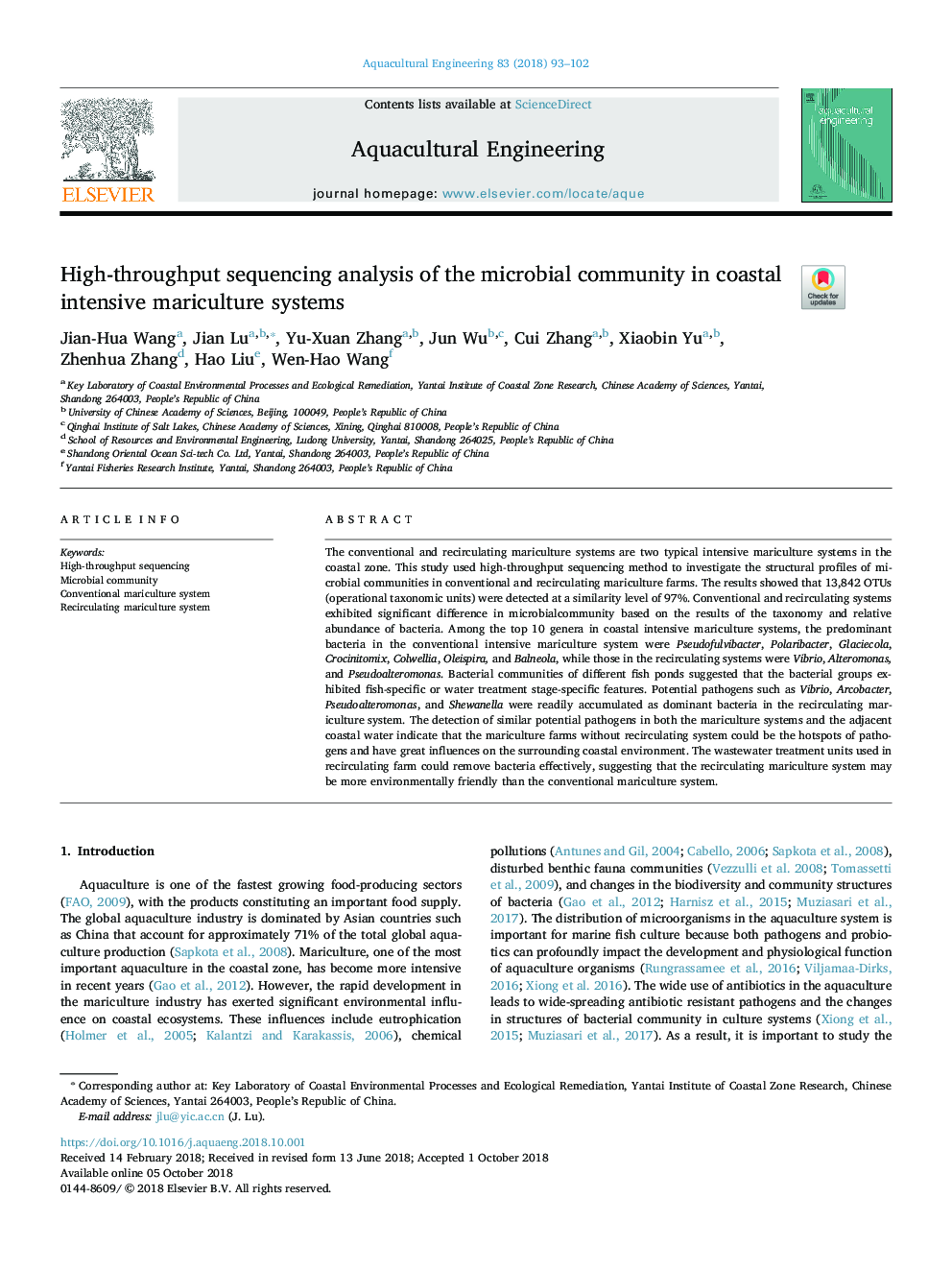| Article ID | Journal | Published Year | Pages | File Type |
|---|---|---|---|---|
| 11033209 | Aquacultural Engineering | 2018 | 10 Pages |
Abstract
The conventional and recirculating mariculture systems are two typical intensive mariculture systems in the coastal zone. This study used high-throughput sequencing method to investigate the structural profiles of microbial communities in conventional and recirculating mariculture farms. The results showed that 13,842 OTUs (operational taxonomic units) were detected at a similarity level of 97%. Conventional and recirculating systems exhibited significant difference in microbialcommunity based on the results of the taxonomy and relative abundance of bacteria. Among the top 10 genera in coastal intensive mariculture systems, the predominant bacteria in the conventional intensive mariculture system were Pseudofulvibacter, Polaribacter, Glaciecola, Crocinitomix, Colwellia, Oleispira, and Balneola, while those in the recirculating systems were Vibrio, Alteromonas, and Pseudoalteromonas. Bacterial communities of different fish ponds suggested that the bacterial groups exhibited fish-specific or water treatment stage-specific features. Potential pathogens such as Vibrio, Arcobacter, Pseudoalteromonas, and Shewanella were readily accumulated as dominant bacteria in the recirculating mariculture system. The detection of similar potential pathogens in both the mariculture systems and the adjacent coastal water indicate that the mariculture farms without recirculating system could be the hotspots of pathogens and have great influences on the surrounding coastal environment. The wastewater treatment units used in recirculating farm could remove bacteria effectively, suggesting that the recirculating mariculture system may be more environmentally friendly than the conventional mariculture system.
Related Topics
Life Sciences
Agricultural and Biological Sciences
Aquatic Science
Authors
Jian-Hua Wang, Jian Lu, Yu-Xuan Zhang, Jun Wu, Cui Zhang, Xiaobin Yu, Zhenhua Zhang, Hao Liu, Wen-Hao Wang,
